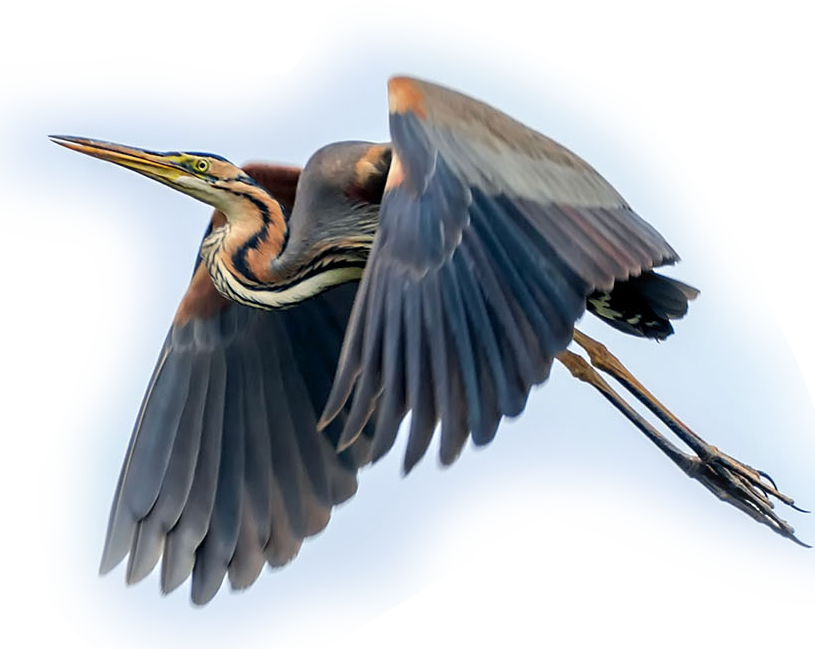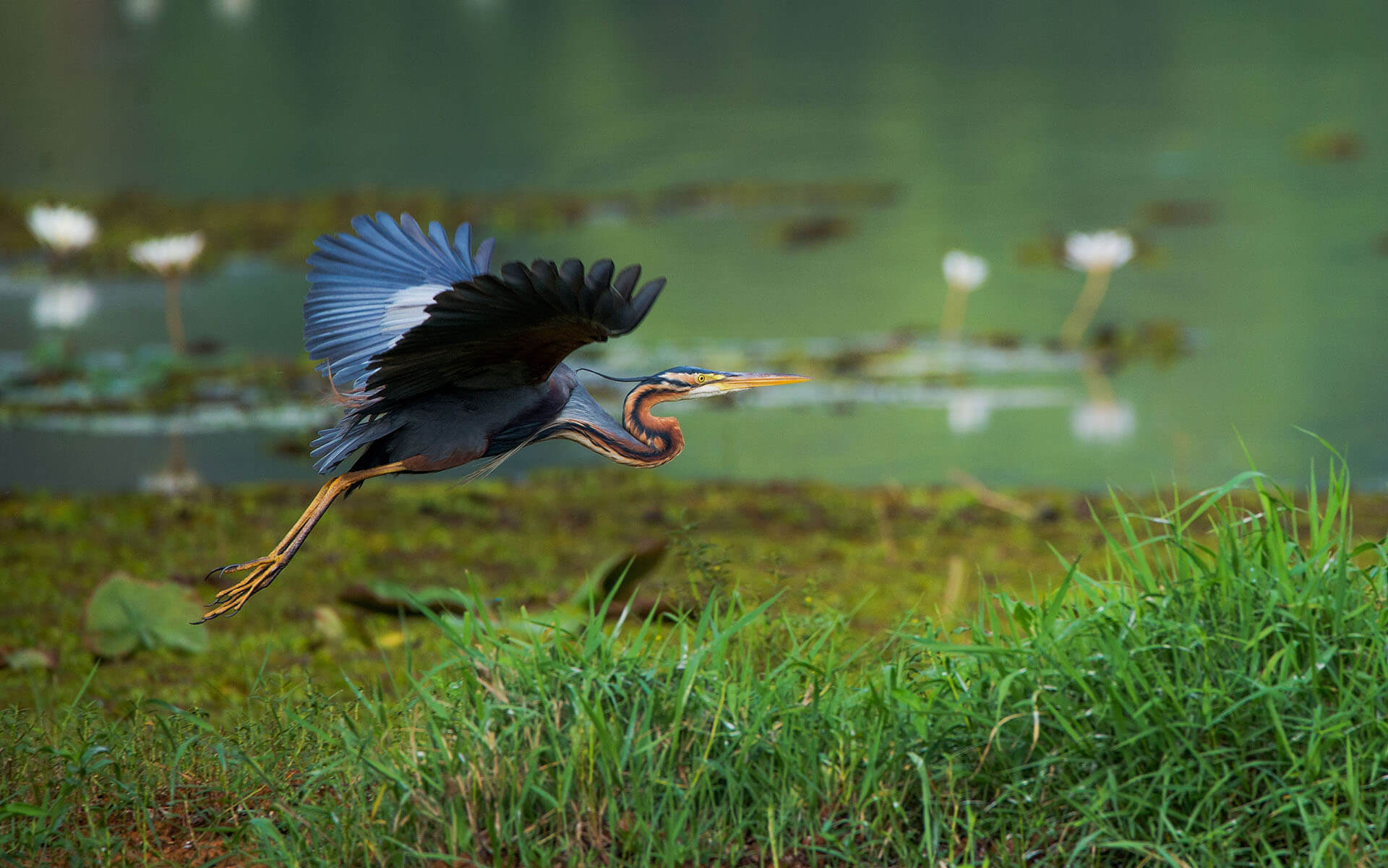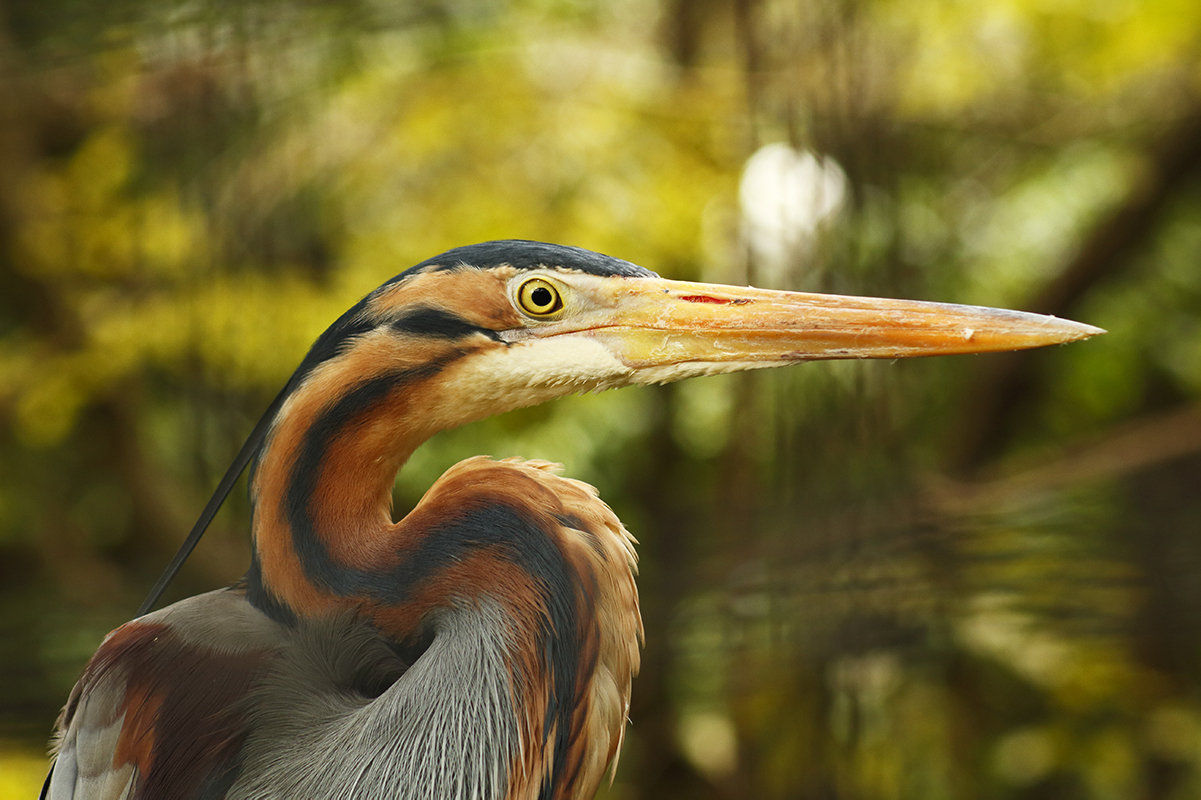In respects to other species of the same family, the Purple Heron is distinguished by its beautiful plumage. It has a prominent and elegant tuft of feathers that go from its beak to its neck, with a remarkable chromatic variation that goes from brown to reddish, with a purplish body. It is for this reason that it has often been prey to poachers, who want to steal their precious feathers.
The species is also endangered by the destruction of their habitat: only 5,000 couples remain in Europe. It is considered to be a protected species in various countries. In France, for example, it has been a protected species since 1981. In Italy, thanks to a European directive, it is also considered a protected species: disturbing, capturing, or harming it is forbidden. In addition, taking its eggs, nests or altering its environment is banned. Their possession, sale, purchase and transport are also prohibited.
It is for this reason that natural reserves protecting the Heron, along with other animals, were created. Some are found in the areas of Franciacorta, such as the Torbiere del Sebino Natural Reserve, declared to be “wetlands of national importance” according to the Ramsar Convention, “Zona Speciale di Conservazione” (ZSC) (Special Conservation Zone) and “Zona di Protezione Speciale” (ZPS) (Special Protection Zone). Within the Natura 2000 network, it is considered a priority area for the biodiversity in the Lombard- Po Valley.
How we protect the Purple Heron habitat
 The most colourful of the Herons that live in the countryside of the Po Valley.
The most colourful of the Herons that live in the countryside of the Po Valley.










